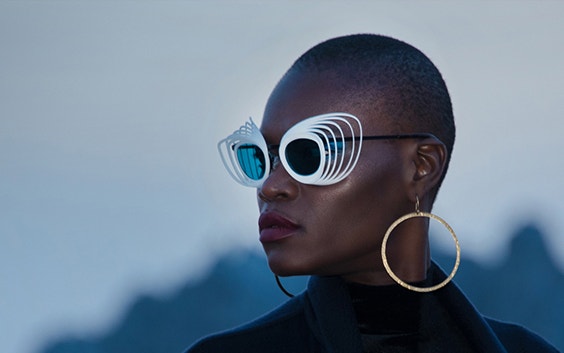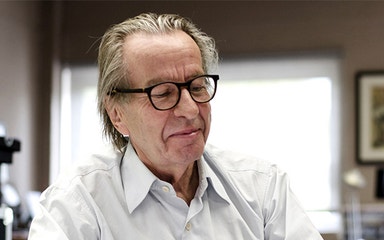
INTERVIEW
3DP&Me: "It’s Not Often That Fast-Fashion and Sustainability Go Together — Here, They Do"
An interview with brand founder of JF Rey and CEO of Maison — Jean-François Rey
Welcome Jean-François Rey. You were a key part of the ‘function to fashion’ revolution in eyewear design during the 1980s. Do you see 3D printing as a new revolution?
I see it as a new opportunity, for sure. How designers choose to seize this opportunity is what dictates the revolutionary aspect. For me, I think the potential is huge. From a purely creative perspective, the process opens the door to ‘extreme design’… shapes and structures that are simply impossible to realize using any other technique. That’s exciting.
What’s important to remember is that knowledge is the first step with this technology. Understanding it, playing with it, imagining differently with it. And experimenting with it. That’s how you make the most of the opportunity. How you start your own revolution.
Is that what you did with Nautinew — your first collection to feature 3D-printed components?
Yes. In fact, the name of the collection, ‘Nautinew’, reflects this. It is a reference to the NAUTILUS submarine made famous by Jules Verne for its cutting-edge technology and high engineering. Nothing like this submarine existed before, and by leveraging the design potential of 3D printing techniques we’ve made models in the Nautinew range equally unique — the complex shape and manipulation of lightweight material complementing the metal frames.
What’s also really interesting about Nautinew is that the collection is a fantastic demonstration of another important benefit that 3D printing has to offer the eyewear industry: sustainability.
Why do you see the process as more sustainable and how did you leverage this?
With Nautinew, we already had a simple metal frame structure in stock. We knew that the design freedoms of 3DP would allow us to take these frames in a completely different direction. To create new interest and excitement through the graphic contrast between the existing frame shape and an innovative new shell we developed with Materialise — between rectangular and round. We married opposing but complimentary designs in one form. The technology has a lot to offer in terms of optimizing existing materials and resources.
The advantages don’t stop there. Developing new eyewear concepts and collections is a process naturally prone to waste. At least with traditional techniques. A lot of acetate goes into moving from prototype to finished model, not to mention the requirement for associated tooling and finishing.
The flexibility you get with 3DP is special. The ability to adjust digitally, prototype and print exactly what you need, finished the way your designers have imagined it — all with minimal waste. Not to mention the opportunity to print small series runs to test the market and easily adapt to meet demand. This is really powerful stuff. Especially when your brand is known for constantly producing new concepts, shapes, and collections. It’s not often that fast-fashion and sustainability go together — here, they do.
“More experimentation, new opportunities, huge potential.”
What do you think is the biggest driver for using 3DP in eyewear production: the flexibility you mention or the design potential?
It is not an either/or. The appeal is the two in tandem.
As a designer, when somebody presents you with a production option which gives you the opportunity to physically create shapes that would otherwise only ever exist in your imagination — that’s a very attractive proposition. I know it’s what excites our design team here. We are working on a project right now in fact, a collaboration with a Japanese designer inspired by video game fashion, that would be impossible to progress with any other method. But when you can also use that same method to develop, test, and produce mainstream collections, the benefit of adding 3DP to your portfolio of solutions is clear. To me, anyway.
Personally, I think there is another driver, too. Well, a variation on what I was saying before about flexibility. And that is that you don’t have to think of 3DP as an ‘all or nothing’ option. I love the fact that you can pair different production techniques, materials, and processes. Getting this combination right is where you can add a lot of creativity and craftsmanship.
And finally, what’s next for JF Rey and 3DP?
More experimentation. Our designers are keen to try new things, for example to test out concepts using different 3DP materials — metal perhaps. We will also be interested to see what new materials and finishes become possible with 3D printing. I know, for instance, that some of our team would like to see how things develop in terms of greater levels of material transparency.
Beyond this, it’s hard to say exactly ‘what’s next,' but I do know it will be a collaborative process. Already in working with Materialise, we’ve learned things about the technology and they have learned things about eyewear design. I think this two-way process is important for both sides to get the most out of the opportunities ahead.
Share on:

Biography
Jean-François Rey
You might also like
Never miss a story like this. Get curated content delivered straight to your inbox.
